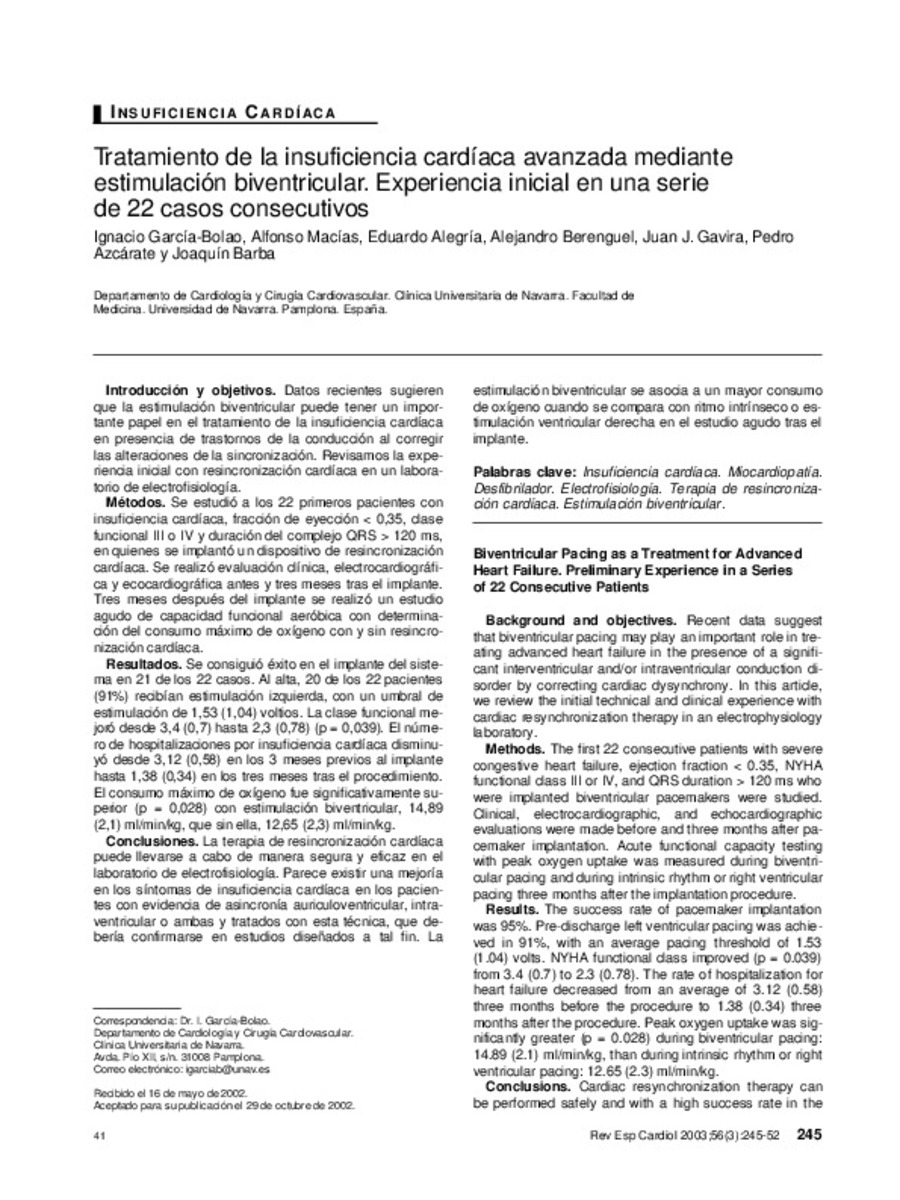Tratamiento de la insuficiencia cardíaca avanzada mediante estimulación biventricular. Experiencia inicial en una serie de 22 casos consecutivos
Other Titles:
Biventricular Pacing as a Treatment for Advanced Heart Failure. Preliminary Experience in a Series of 22 Consecutive Patients
Keywords:
Cardiac Pacing, Artificial/methods
Heart Failure/complications/therapy
Heart Function Tests
Publisher:
Elsevier España
Citation:
Garcia-Bolao I, Macias A, Alegria E, Berenguel A, Gavira JJ, Azcarate P, et al. Tratamiento de la insuficiencia cardíaca avanzada mediante estimulación biventricular. Experiencia inicial en una serie de 22 casos consecutivos. Rev Esp Cardiol 2003 Mar;56(3):245-252.
Statistics and impact
0 citas en

0 citas en

Items in Dadun are protected by copyright, with all rights reserved, unless otherwise indicated.








